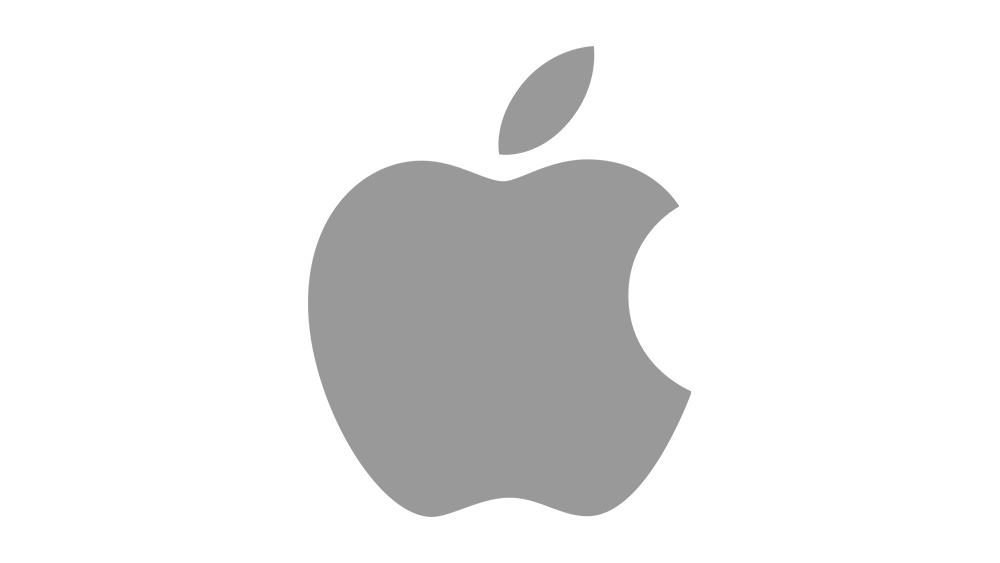
Today the Apple logo perfectly reflects everything we associate with Apple. It's clean, minimalist, and somehow looks modern and premium despite merely showing one a common fruit with a bite taken out of it. But this wasn't always the way. There Apple logo hasn't undergone many changes in its time, but when it did change, the transformation was big.
Apple was born in April 1976, and the first Apple logo was... well, not at all like the Apple we know today. In fact, it's the complete opposite of what we associate with the Cupertino tech giant: fussy and positively old-fashioned, perhaps even 19th century in its look. Read on to discover the fascinating Apple logo history, from the 1970s to today. And for more logo inspiration, make sure you check out our roundup of the best logos of all time.
The Apple logo history: 1976
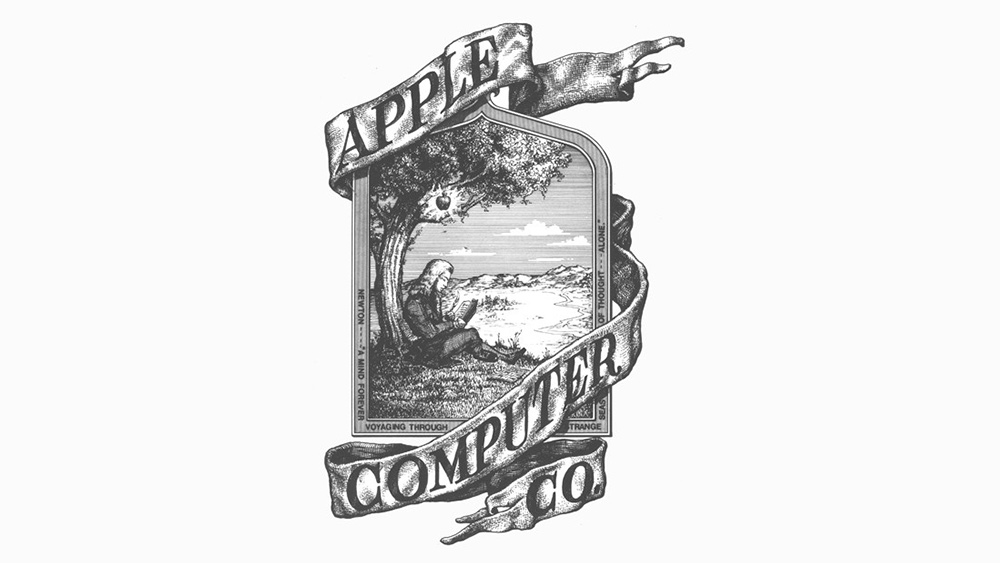
Is that Steve Jobs reclining under a tree? Of course not. It's Issac Newton, waiting for the theory of gravity to hit him, literally. The first Apple logo looks more like a logo design for an antique book shop or even a pub rather than the world's leading tech company. 'Apple Computing Co' appears in all caps in a ribbon wrapped around what looks like an engraving of the famous English physicist.
Is Newton's Apple moment where Apple took its name from? It seems not. Jobs said in a press conference in 1981 that he just liked Apples, so it seems the connection to Newton was more of an afterthought. The logo was designed by the slot machine entrepreneur Ronald Wayne, who left Apple just days after the company was founded. His logo design didn't last that much longer.
The Apple logo history: 1977
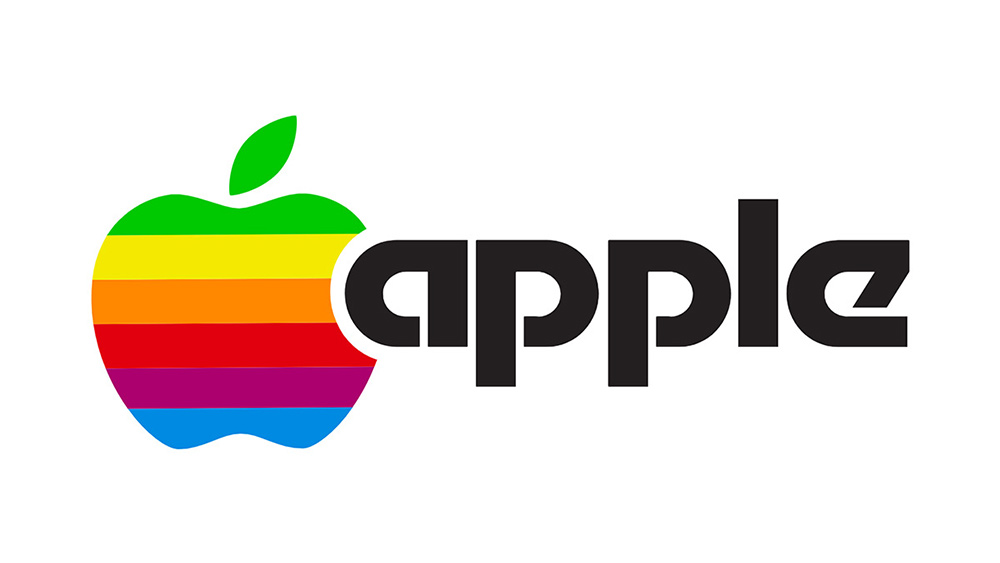
Just one year on, Apple's remaining founders, Steve Jobs and Steve Wozniak wisely decided that they needed a more modern-looking logo for their new company. Just imagine trying to scale down that original logo to put on a machine. Jobs brought in the graphic designer Rob Janoff for the task, and in two weeks the process was complete for the launch of Apple's first personal computer, the Apple II, in April 1977.
Janoff’s design was remarkable for its simplicity. A 2D apple with a bite taken out of it. That alone might have looked a bit too minimalist for the time, but the Apple was given its famous rainbow colouring, making it really stand out among brands of the day.
Was the bite mark in the Apple a tribute to Alan Turing, who killed himself by eating a poisoned Apple? Nope, that's one of those logo urban legends. The reason for the bite was to clarify it clear that the fruit is an Apple since with no reference to help us gauge proportion, it could just as easily be a cherry. The bite also allowed the word 'apple' to initially be placed inside the space in the Apple.
Get the Creative Bloq Newsletter
Daily design news, reviews, how-tos and more, as picked by the editors.
The Apple logo history: 1984
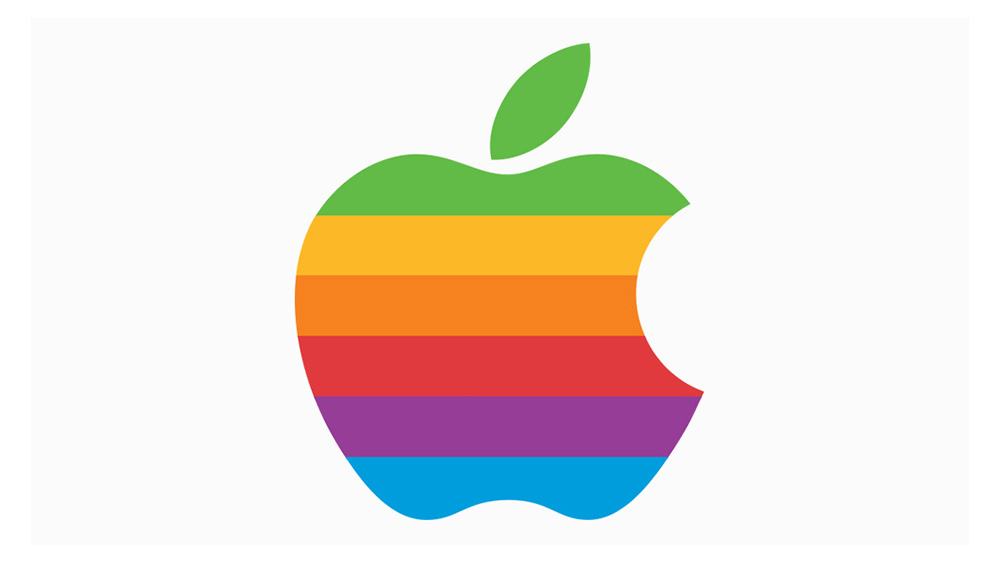
The logo saw a small tweak in 1984 when Landor & Associates were brought in ahead of the launch of the Macintosh. Apple got a new typeface, but the logo was now often used without the name. The colours and shape were tweaked a little too. This design was used right through the post-Steve Jobs period, including in the hilarious 1986 Apple clothing line and all the way up to the launch of the 'Think different' campaign in 1997.
The Apple logo history: 1998
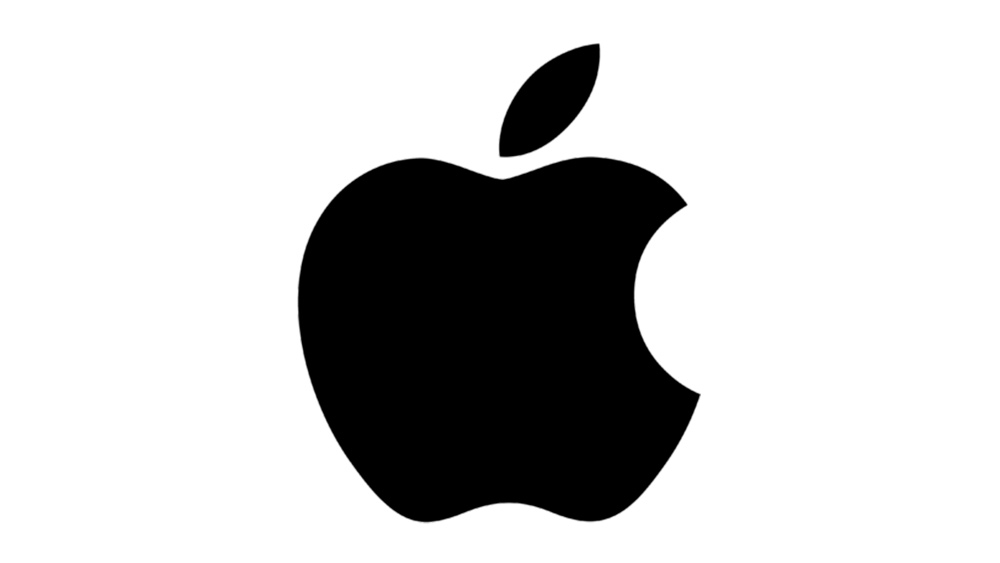
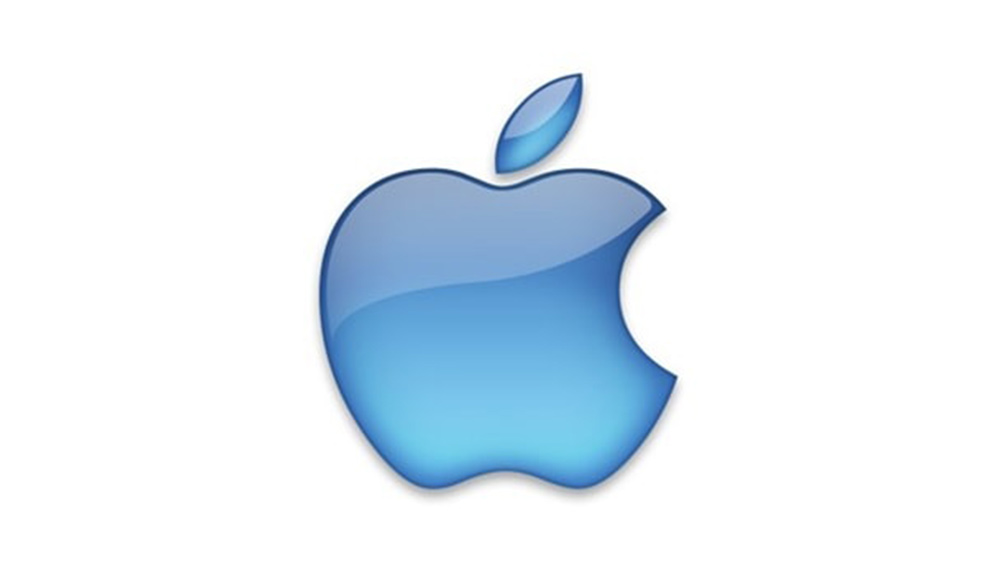
In 1997, Steve Jobs returned to a company that was floundering. His solution was to position Apple as a luxury brand, and that required some tweaks to the logo. The bright rainbow colours were ditched for a solid black apple, and the shape of the logo was also honed, becoming slightly thinner.
There have been a few variations. A translucent blue version of the logo was also developed, reflecting the colour of the Bondi Blue of the new iMac, and a shiny very new millennium lightly embossed aqua Apple logo featured on Apple MacOS X Cheetah in 2001.
The Apple logo today

The Apple logo remains very similar today. It's used in black, white and grey (or silver) depending on the application. The grey Apple logo is the one used on the Apple website and the Apple store as its favicon, and it's close enough to silver to give a premium look and to reflect the metallic look of the logo as it appears on devices.
The logo is a success for several reasons. It's simple but recognisable and memorable, and it represents the company's name in a literal way, while also being abstract enough to feel like it makes sense for what the company does. The sleek feel of the logo also perfectly captures Apple's focus on minimalist but high-quality design.
To discover the stories behind other tech logos see our pieces on the YouTube logo and the Google logo. We also delve into the Coca-Cola logo history. To work on your own designs, make sure you have the best graphic design software.
Read more:

Thank you for reading 5 articles this month* Join now for unlimited access
Enjoy your first month for just £1 / $1 / €1
*Read 5 free articles per month without a subscription

Join now for unlimited access
Try first month for just £1 / $1 / €1

Joe is a regular freelance journalist and editor at Creative Bloq. He writes news, features and buying guides and keeps track of the best equipment and software for creatives, from video editing programs to monitors and accessories. A veteran news writer and photographer, he now works as a project manager at the London and Buenos Aires-based design, production and branding agency Hermana Creatives. There he manages a team of designers, photographers and video editors who specialise in producing visual content and design assets for the hospitality sector. He also dances Argentine tango.
